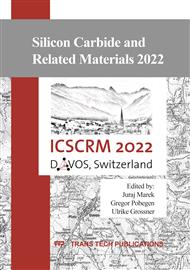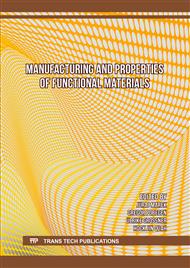p.3
p.9
p.15
p.23
p.29
p.35
p.41
p.47
p.53
Study of GHz-Burst Femtosecond Laser Micro-Punching of 4H-SiC Wafers
Abstract:
The micromaching of silicon carbide using femtosecond laser pulses is becoming an important field of research. High-repetition-rate sub-pulse trains, so-called pulse bursts, are a particularly promising route towards completely new process regimes. We report on the results of micro-punching n-type 4H-silicon carbide wafers using GHz pulse burst in order to systematically investigate the influence of the temporal energy distribution on laser processing. Pulse-burst experiments are performed at a laser wavelength of λ= 1030 nm using a single GHz burst containing a varying number of pulses and then compared with standard single femtosecond pulse exposures. The pulse energy is swept across the ablation threshold. For each set of parameters, the micromachining efficiency is evaluated in terms of ablation efficiency and burr characteristics. Scanning electron micrographs provide qualitative information about the machining quality. The characteristics of the laser modification are discussed in relation to an increase in the number of pulses in a burst envelope and to an increase in pulse energy. We observe that, compared to a single pulse, a GHz burst comprised of 10 lower-energy pulses leads to an increase in the ablation rate by a factor of ≤ 10.
Info:
Periodical:
Pages:
29-33
Citation:
Online since:
June 2023
Authors:
Keywords:
Permissions:
Share:
Citation:



